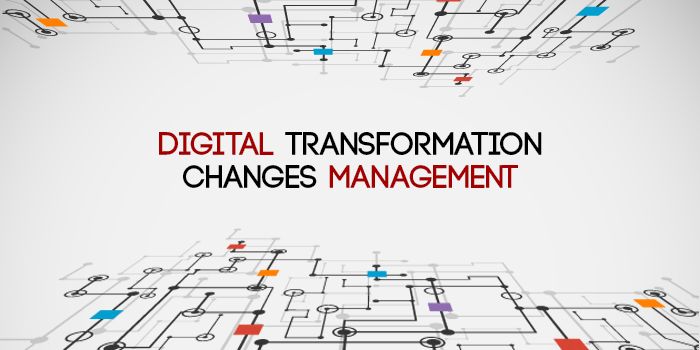Digital Transformation & Change Management: How to Be Ready
18 October, 2022

Vitaliy Zhovtyuk
CEO / Managing Director
& Founder

Are you ready for the digital transformation? And it’s not only about implementing new technologies in your business processes. It’s also crucial to focus on how people cooperate with one another. And it’s when change management comes in handy.
Is your company ready for the digital transformation? If your business wants to survive in a highly competitive environment and prosper in the long-term, it must transform and adapt to the growing expectations of customers and technological changes in society.
Digital transformation stimulates the companies to choose the right technology as well as find out what no longer works and should be replaced or updated. It’s a big deal for management to elevate productivity and embrace technological advancement to bring impactful results in business operations.
Getting down to any project always seems challenging. And digital transformation is not an exception. The very nature of these process means significant changes are coming. When done right, it fundamentally modifies the way your organization works and handles challenges. And it’s not only about installing new software. First of all, digitalization is reorganization of how you do things and how people cooperate with one another.
Performing digital transformation right is critical. The research shows that companies doing the digital transformation in a proper manner win market share while others have a negative ROI for their investments.
To implement digital transformation successfully, it’s wise to rely on a managerial discipline called change management.
Change management should transform
The evolution of change management as a discipline has been related to technology-driven developments and transformation in large corporations. Nowadays, as more and more companies make the most of digitalization, the role of change management needs also to be improved to meet new challenges. These issues involve deeper and broader human impact connected with digitalization, and the use of implementation methods such as user experience and design thinking.
According to Neil Kinson from Redwood Software, there is only one main problem of change management — there aren't many practices when it comes to digital transformation. In fact, there is a standard scheme for change management which begins with the C-suite and get down through all levels of management.
But digital transformation requires another algorithm. This process doesn't have the track record. Besides, the change it can bring in is enormous.
So how can you implement a digital transformation strategy within your company? We’ve created a list of the best change management practices to think about when embarking on a digital transformation journey.
Put first things first
Previously, change management for technology used to be applied at the last stage. In other words, the focus was on the process of implementing the technology, and then on the influence this process had on the people. Only after the evaluation of this impacts, a change management plan tends to be composed.
In the era of digitalization, change management has come to the fore. Today, having a conversation with people about the future changes is a top practice before performing any aspect of digital transformation.
The main idea of that is to increase loyalty around everything that is about to happen and get people excited about your digital transformation plan.
Build C-suite support from the very beginning
Getting support from the top is significant for changes to be realized down the track. For businesses that are faced with difficulties in the new digital world, it might be easier to build support that for those that succeed. In fact, companies feeling an impact of the current climate are already ready for it. On the other hand, those organizations that don’t consider its effect may be more resistant to new changes.
To get management on board, change managers should understand the business pain points and provide practical solutions. The transformation can be implemented step by step. There is no need to make a dramatic modification that will turn a company on its head. This gives employees an opportunity to adjust to the change and consider it as a good thing, rather than a challenge.
Understand the technology deeply
One of the most critical stages of any digital technology implementation is explaining to employees how this transformation is going to change the way they work and ensuring that they can continue doing their jobs.
That’s when technology advisors come in handy. They can provide the team members with various training programs to help them gain a better understanding of the new processes.
Create a game plan
Planning is a vital step to digital transformation. Nevertheless, you need to be agile with plans.
There is always a risk to become very strict about holding to a plan, especially when you spend hours working on creating a detailed one. But digital transformation required flexibility. So if the future developments signal that change is needed, don’t be afraid to reconsider your plans. Otherwise, you may find yourself spending a significant amount of time on something that is not usable anymore.
Realize the changes in company culture
The study shows that company culture tends to fall behind process and technology when it comes to digital readiness. But digital transformation should always influence how business operates on a cultural level.
If done right, digitalization brings transparency and motives working in a collaborative function. And it doesn’t always come easy. Thus, change management for digital transformation also includes creating a dialogue about not only the technology but also the modifications of processes in different teams.
If you don’t want to get a lot of naysayers, initiate some honest conversations about what future is waiting ahead and give employees an opportunity to express their worries honestly. It’s up to change managers to make sure that all changes are perceived as an excellent environment for innovation.
Final word
No doubt, digital transformation is a complex task for change managers and employees from top to bottom. It should be implemented gradually after strategic planning. You need to have a clear vision for the end-stage to get every member of your team moving in the same direction. Even so, there must always be a place for flexibility.
Make a cultural change and education aspects of transformation a highlight of your plan. It’s significant to guarantee that everyone in the company is on board. To consider the digital transformation as a good thing, employees have to be aware of all the changes it brings. So don't forget to explain any improvements in your vision during the process.



